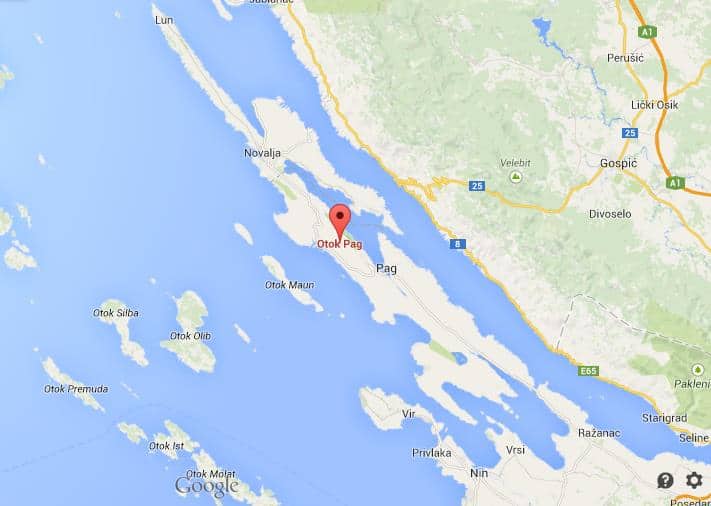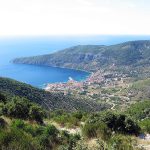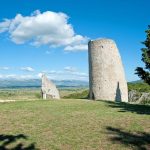Welcome to Pag, home to world-class cheese, lamb, salt, lace and party! How to get there, what to see and do on Croatia’s most diverse and unusual island.
- Welcome to Pag!
- How to get to and around Pag
- 5 things not to miss
- Bura, a wind which defines an island
- Where to stay
- Where to eat
- 5 things you didn’t know about Pag
- Beaches on Pag
- More information
Welcome to Pag!
I don’t think there is anywhere on the planet quite like the island of Pag. It is an island of such extremes – and surprises – that it is hard to believe that all its parts comprise the same island.
The initial reaction of most visitors is that they are landing on the surface of the moon, so stripped of vegetation are parts of the island which are exposed to the bura wind. And yet, the incredible ancient olive groves of Lun are one of the natural treasures of Croatia.
Its cheese has won awards as the best in the world, its lamb is accepted as the best in Croatia. Its lace has been recognised by UNESCO and its salt pans are among the best in the region. Contrast its fantastic beaches with the biting bura wind which defines and controls life in parts of the island.
And so it would seem only natural that such a diverse island is also the partying capital of the Adriatic. There is nowhere better to be than Zrce beach in the summer for partygoers. An incredible island – let’s explore!
How to get to and around Pag
By plane
Most visitors by air come via Zadar airport, which is about 80 km away. Not only is Zadar the closest airport, but it also has lots of cheap flights. This is good news for all the partygoers heading to Novalja and Zrce. And yes, there is a bus service from Zadar airport to Novalja. The cost is in the region of 10 euro one way. Other flight options are Split Airport, Rijeka Airport and Zagreb Airport.
By car
Pag is one of the few islands in Croatia which is connected by bridge to the mainland, which makes it accessible 24 hours a day (unless that mighty bura wind is blowing!) The island is 65 km from the Zagreb to Split motorway (exit at Posedarje) and 76 km from Zadar.
The roads on the island are excellent and uncrowded out of the peak season, but do look out for wandering herds of sheep. The main road to Lun is fast, straight and very picturesque.
Looking for a fast, reliable and trouble-free transfer to or from Pag? Contact TC transfer partner Adriatic Transfers for your one-stop solution.
By bus
The island is well served with connecting buses to the mainland. Check out Bus Croatia for timetables and prices. Online booking is possible. The Liburnija Zadar bus company also has useful info on travel from the city of Zadar.
By boat
There are three different options for arriving and departing the island by boat. There is a car ferry service from Prizna on the mainland to Zigljen. The journey takes about 20 minutes and is quite spectacular. This side of Pag is devoid of vegetation, and it really does look like the surface of the moon.
At the tip of the island, there is also a connection between Lun (Tovernele) and the island of Rab. But the main ferry traffic goes from Novalja. Your choices are Krk, Lopar, Pesaro, Rab, Rijeka, Vir and Zadar. You can learn more about ferry times and prices here.
Getting around
There is a good network of local buses to get around, and yes, there are inexpensive transfers available from Novalja to Zrce beach. Here are the links to Novalja bus station and Pag bus station.
5 things not to miss
With such a diverse island and so many things to see and do, it is hard to limit the choice to just five.
The magical ancient olive groves of Lun
This is one of the natural wonders of Croatia. All the more so when you consider just how barren Pag is on arrival. The human settlement of Lun dates back to 1653, but Mother Nature was there long before that.
The wild olive groves of Lun are astonishing. More than 80,000 trees over 500 hectares include at least more than a thousand trees that are over 1,000 years old. The oldest tree is confirmed at 1,600 years, with one thought to be as old as 2,000. There is even an amphitheatre in the olive groves, which hosts concerts in the summer. Here’s a comprehensive article about Lun – a great read.
There is no better party than a Zrce party
If you are looking for a contrast to the tranquility of Lun, drive just a few kilomtres down the island to Zrce beach,just before you reach Novalja. This long pebble beach is THE party destination in Croatia – nothing else comes close. Several clubs right on the beach provide the music, and the party goes on all summer. There are also several festivals throughout the summer.
There is no doubting the influence the Zrce party has had on tourism in Novalja and the island in general. Before Zrce, Novalja was a sleepy fishing village with little tourism. Today, almost everyone is making tourist dollars from the young (mostly British) revellers. It may not be pretty at times, but Novalja seems to have accepted its decision to embrace party tourism. Looking where to find the action?
Plans and line-ups for the summer 2021 season have not yet been announced. In 2020, official epidemiological guidelines had an impact on Croatia’s clubbing and festival events. However, there was still partying on Zrce beach. If we had to put money on a party spot that will run much the same as any other year, it would be here.
Taste officially the best cheese in the world
Mention Pag to any foodie in Croatia, and they will immediately start talking about the lamb and the cheese. Prsut and Pag cheese is a classic starter in Dalmatia, but the fame of Pag cheese has long ago passed through Croatia’s borders.
A combination of salt from the bura wind, the free-roaming sheep of the island, and local expertise have meant that Pag’s cheesemakers – particularly Gligora in Kolan – are regularly among the medal winners at the World Cheese Awards. A visit to Gligora or Paska Sirana is highly recommended. This is how a visit looked in 2018.
Salt and UNESCO lace, the historic pride of Pag Town
And after the olives, the party and the cheese, what next? Pag is one of three locations in Croatia, whose method of lace production has been inscribed as UNESCO intangible heritage. Lepoglava near Varazdin and the incredible agave lace from Hvar’s Benedictine Nuns are the others. You can learn more about the island’s lace-making traditions, which dates back to the 15th century, in the UNESCO video above, the feature here, or by visiting the exhibition in Pag Town.
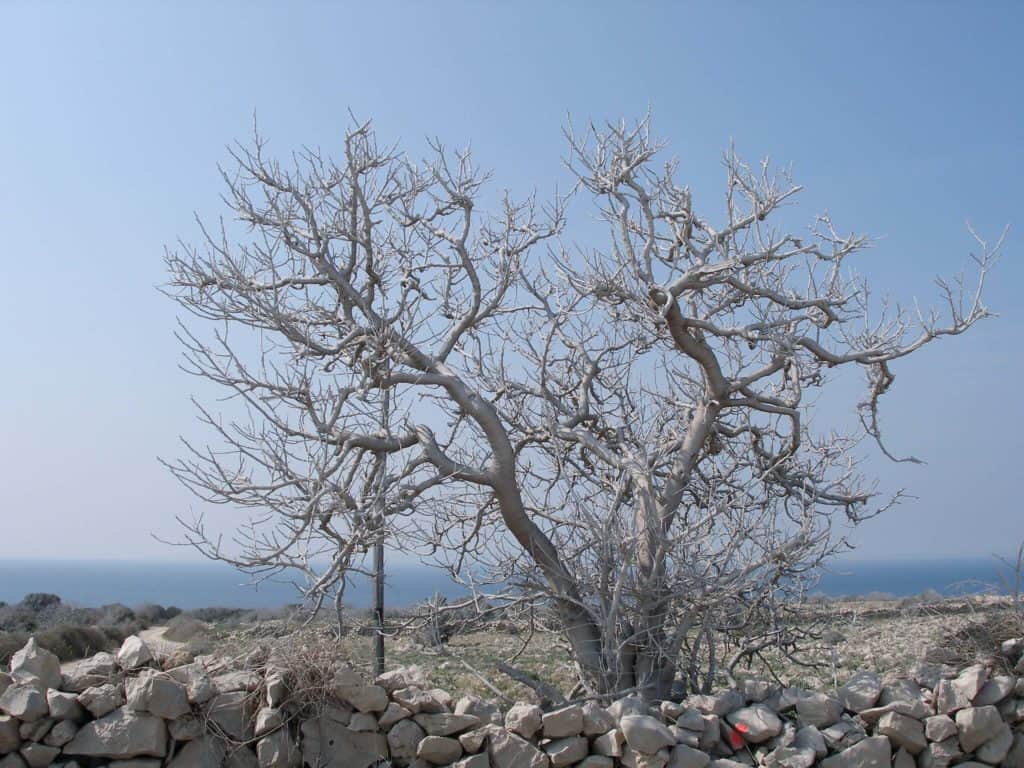
But if there is one thing which has played a huge part in the life of the island, it is salt. From the bracing effects of the bura to the saltiness of the excellent cheese and lamb, salt is omnipresent on the island. Along with Nin and Ston, its saltpans are the most important in the region. The salt museum in Pag Town is well worth a visit, as is a read of this feature article on the salt influence on the island.
Pag lamb
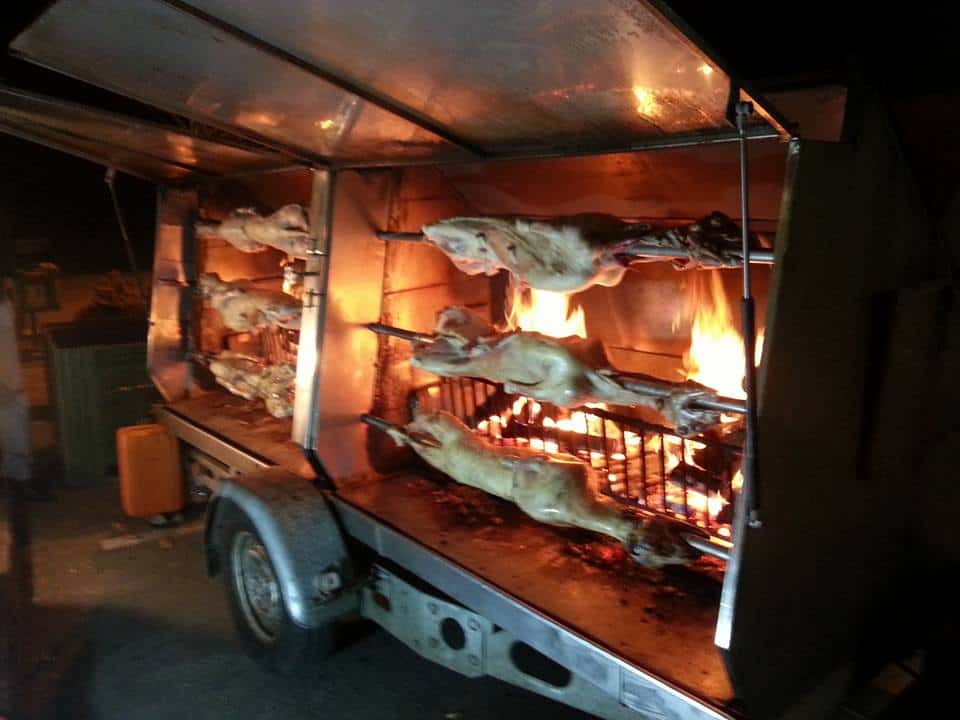
But talk to any meat eater in Croatia and mention Pag, and the conversation will turn immediately to lamb.
Pag lamb is simply the best, and do not leave the island without trying it (unless you are vegetarian, of course). There are more than 35,000 sheep roaming freely on the island, feeding themselves on the salty vegetation influenced by the bura wind.
So good is the lamb from the island that there is at least one restaurant in Croatia (Zganjer near Ozalj) which ships live lambs each day from the island for a quite magnificent feast. If you ever wondered what a 10-course lamb dinner looked like, something like this. Meet the menu known as Her Majesty, the Lamb!
Bura, a wind which defines an island
There is nothing quite like the bura wind, a biting north wind which rips through everything in its wake. Pag is one of the most exposed places to the bura on the Adriatic coast. You can see how merciless this fierce wind is by the barren landscape on the parts facing the bura’s wrath.
I personally love the bura. It is one of the most cleansing things in life, I have found. I often go out in a t-shirt and let the bura blow through me and cleanse my soul. I will confess that I am in a minority of one when it comes to wearing a t-shirt.
The bura is also a Dalmatian housewives’ favourite. Apart from the quicker drying effects of the wind, the bura is usually followed by a couple of days of chilly, but very sunny weather – perfect for catching up on the laundry.
One of the best places to experience the full brunt of the bura is Paski Most (Pag Bridge), the road entrance to the island. When the bura is very strong, the road is closed. And while we do not advise jumping around in the middle of a full-scale bura, the video above shows what it is like.
But there is much for foodies to thank the bura for. It is one of the main contributing factors in the fabulous cheese and lamb, for which the island is famous.
Where to stay
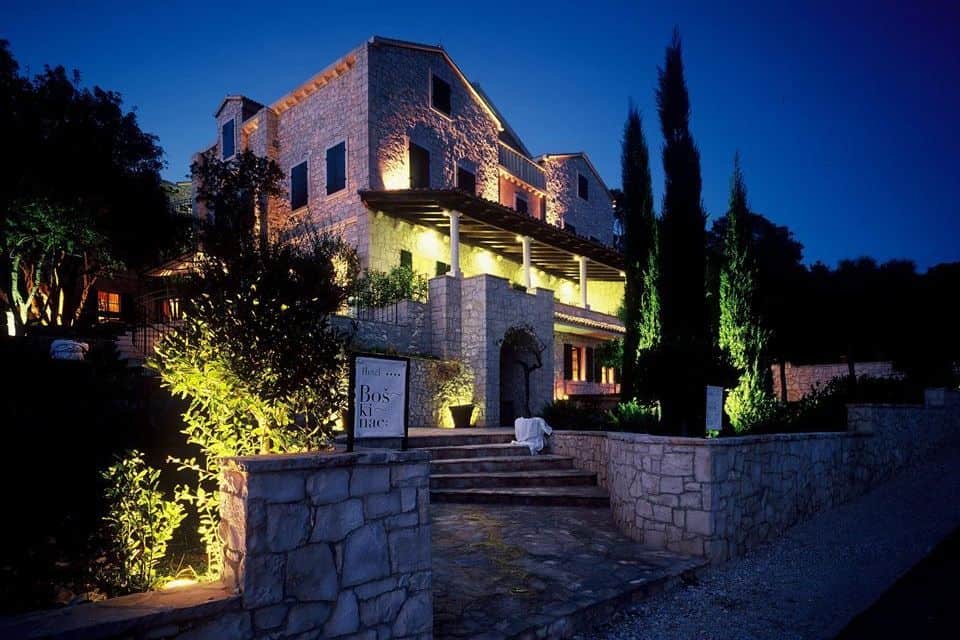
If you are looking for high-quality accommodation on Pag, there is only one address you need – Boskinac, just outside Novalja. Set in isolation in its own grounds, the Boskinac winery, restaurant and hotel is a delightful all-in-one gourmet and hospitality experience.
There is no doubt where to find the most abundant accommodation on the island. Camping Simuni has not only a huge campsite, but also many bungalows and holiday homes in a massive waterfront complex. And if the Simuni owner has his way, he will be bringing a lot more accommodation to the island – see below.
Where to eat
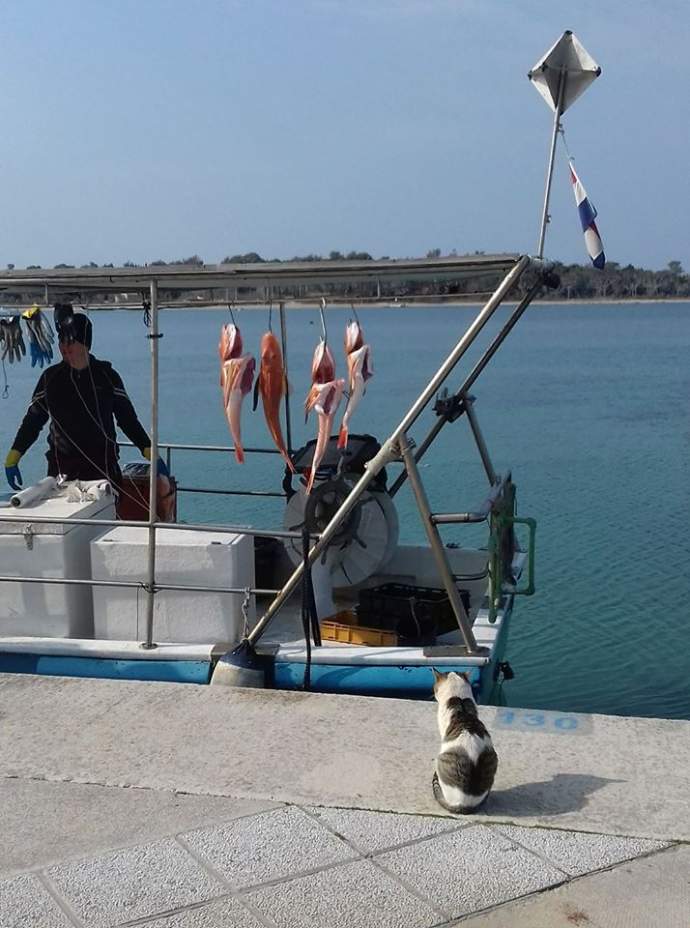
With such amazing lamb and cheese, the Pag diet is perhaps a little different to other Dalmatian islands, but there is also abundant fresh seafood from the Adriatic. The menus are by and large traditional, although Boskinac’s fine dining has attracted national and international attention. Check out the latest top rated places to eat on TripAdvisor.
5 things you didn’t know about Pag
Pag was once a walled town like Dubrovnik
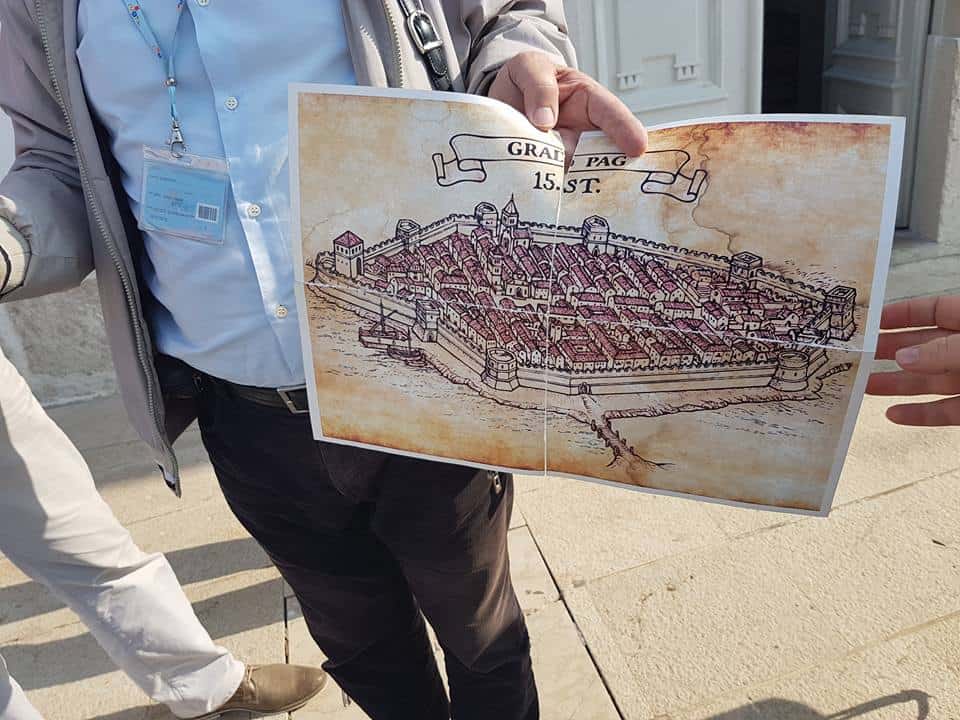
Unlike its neighbour Novalja, Pag town has no ancient stories to tell, no Roman or Greek origins to brag about. Instead, it stands out as one of the few Adriatic settlements built according to a specific master plan coined in the 15th century. As the Ottoman threat slowly started to loom on the horizon, inching towards the shores of the Adriatic, the residents of the historic Pag thought it a good solution to build a new town, encased in impenetrable defensive walls.
Considering the island was ruled by the Venetians at the time, plans and designs for the new Pag were developed in Venice, with a famous creative genius at the helm – Juraj Dalmatinac, the great Croatian sculptor and architect.
Pag has its own UFO landing site
What else could we possibly find on this incredible island? A UFO landing site, perhaps? From Wikipedia:
Pag Triangle (Croatian: Paški trokut) is a land formation in the shape of an isosceles triangle located near Novalja, a small town on the Croatian island Pag. The triangle has one side measuring approximately 32 metres (105 ft) and two sides both measuring 22 metres (72 ft). It differs from the surrounding area in the fact that the rocks inside the triangle are of a different structure than rocks outside the triangle.
Croatian Ufologist Stjepan Zvonaric believes it was the site of a UFO landing which heated the rocks to extreme temperatures in the past. This property is unique to the Pag Triangle rocks, and is not found in rocks in the surrounding area.
Since its discovery in 1999, it is estimated that the Pag Triangle has been visited by over 500,000 tourists. It is a protected area of the Town of Novalja. Croatian ufologists have linked the existence of the triangle to a series of UFO sightings in late 20th century over the island of Pag, while some perceive the triangle as a sign of Holy Trinity, sometimes associated with Catholic priest Zlatko Sudac receiving his stigmata during a conversation about the triangle. In early 2009, a road was built connecting the triangle to the nearby village Caska and thus making it more accessible to visitors.
Meet the Golden Coast resort which would transform Pag
Could the look of the island be transformed in the future? A very ambitius 1 billion euro development to redevelop the old saltpans, build a canal and a luxury community of up to 2,500 luxury homes has been unveiled by a local businessman. He claims to have the investors and just needs the premission. Meet the Golden Coast Resort. What do you think?
The amazing Roman aqueduct under Novalja
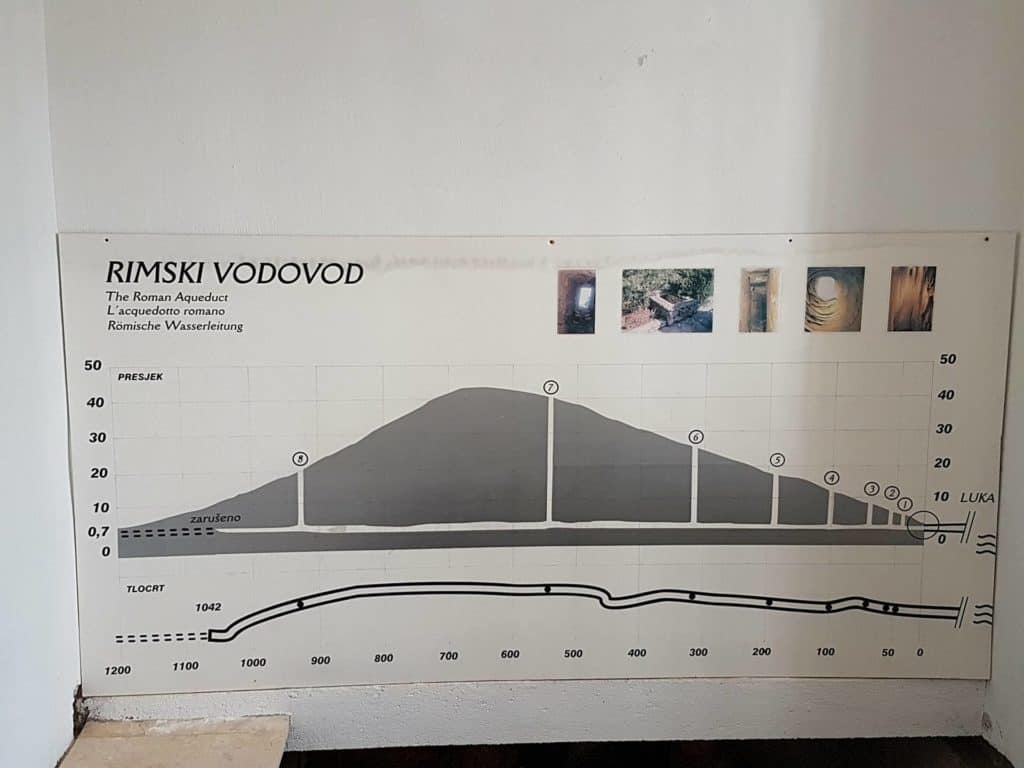
An extraordinary Roman aqueduct built far below the town of Novalja, a true historic treasure which goes unnoticed by 95% of visiting tourists. To learn all about it, down to the finest geeky details, check out this article.
Pag starred in a random BBC reality TV show
Party tourism is an issue which hits the media every summer in Croatia, as excesses by tourists upset some locals. It is a difficult balance to get right – tourist dollars versus the usual tranquil lifestyle – and Novalja seemed to have found the right balance with Zrce beach, which is located outside of town.
Whatever the views of local residents, Novalja authorities decided to embrace the party further in 2017 by collaborating on a reality show called The Brits are Coming. Episode One is above.
Beaches on Pag

When it comes to beaches on Pag, there is no question which is the most famous. A peaceful view of Zrce beach, above, in March before the party season gets into full swing.
There are plenty of other beaches on Pag, of course. For a little local knowledge, here are the top 3 recommended by Boskinac.
More information
Looking to see how much you can pack into 48 hours on Pag? Here’s a firsthand account of a trip back in 2018.
Novalja Tourist Board – Trg Brišćić 1, 53291 Novalja
+385 (0)53 661 404, info@visitnovalja.hr, www.visitnovalja.hr
Pag Town Tourist Board, Od Špitala 2, 23250 Pag
+385 23 611 286, tzg-paga1@zd.t-com.hr, http://tzgpag.hr
To follow the latest news from Pag, check out the dedicated TCN page.

